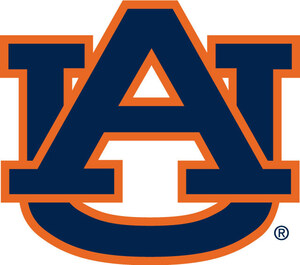AUBURN, Ala., Dec. 13, 2018 /PRNewswire/ -- One of the closest comets in modern times will pass by Earth this weekend – but don't worry, there's no danger of it hitting us. It will come relatively close in scientific terms – seven million miles away. For the average person, the comet will be visible with the naked eye and will provide a rare sky-watching event. For researchers, the proximity of the Comet 46P/Wirtanen to earth will offer a chance to collect data on comets and learn more about the building blocks of the solar system.
Auburn University researcher and astrophysicist Dennis Bodewits will perhaps get the best view of all. He's been awarded time to simultaneously use three of NASA's telescopes during the comet event: the Hubble Space Telescope, the Chandra X-ray Observatory and the Neil Gehrels Swift Observatory. He will be researching what ices make up the comet and how chemical processes change the gas around it.
"These observations are like a space mission in reverse because the comet flies by us," Bodewits said.
Bodewits said this sky-watching event will provide important context to the Rosetta and Deep Impact missions. In the Deep Impact mission, NASA launched a space probe in 2005 to study the interior of a comet by releasing an impactor that collided with the comet's nucleus to emit material from below its surface. It continued its journey through the solar system to snap detailed pictures of a second comet, Hartley 2. Rosetta was a space probe built by the European Space Agency that followed comet Churyumov-Gerasimenko for more than two years around the Sun.
"Because the comet comes very close to Earth, we can investigate the inner 200 kilometers around the nucleus, a region we cannot resolve for most comets. The comet appears to be a close twin to comet Hartley 2, the second target of the Deep Impact mission. Hartley 2 puzzled astronomers because it releases much more gas than was expected from its size. Comparing two will allow us to learn more about how comet activity works," Bodewits said.
Bodewits explained the Rosetta mission taught scientists more about the makeup of a comet's nucleus and the origin of our solar system.
"It unexpectedly found a lot of molecular oxygen gas and discovered that electron collisions can change the comet gas," he said. "These are both important because they inform us what ices made up the building blocks of our solar system, and how they were altered by light and radiation from the Sun."
Because of the significance of this comet's proximity for learning more about the solar system, Bodewits is using as many resources as he can to study it.
"We're going to be observing Comet 46P/Wirtanen with as many telescopes as we can get our hands on," he said. "The timing of this comet could not be better as our observations will allow us to apply all we learned from Rosetta to a completely different comet."
Bodewits is also looking at another mission that could take NASA back to Rosetta's comet to learn even more. The proposed CAESAR mission (Comet Astrobiology Exploration Sample Return) is a space mission that will go back to Churyumov-Gerasimenko to bring comet material back to Earth so it can be analyzed in laboratories around the world.
HOW TO SEE THE COMET:
Those who are interested in seeing the comet this weekend are likely to get a better view using a telescope or binoculars. Bodewits said the comet should be relatively easy to find for viewers who are in a dark spot.
"Follow Orion's arm through his bow to the right and look for a fuzzy blob that is green compared to the stars around it," he said. "Orion is always easy to find by the bright stars that make up his belt."
Within the continental United States, the comet will be visible most of the night starting from dusk until early morning. Because of a first quarter moon phase that evening adding brightness to the night sky, Bodewits said binoculars are the preferred method of viewing for people hoping to see the comet.
Auburn University is a nationally ranked land grant institution recognized for its commitment to world-class scholarship, interdisciplinary research and an undergraduate education experience second to none. Auburn is home to more than 29,000 students, and its faculty and research partners collaborate to develop and deliver meaningful scholarship, science and technology-based advancements that meet pressing regional, national and global needs. Auburn's commitment to active student engagement, professional success and public/private partnership drives a growing reputation for outreach and extension that delivers broad economic, health and societal impact. Auburn's mission to educate, discover and collaborate drives its expanding impact on the world.
SOURCE Auburn University
Related Links
WANT YOUR COMPANY'S NEWS FEATURED ON PRNEWSWIRE.COM?
Newsrooms &
Influencers
Digital Media
Outlets
Journalists
Opted In





Share this article